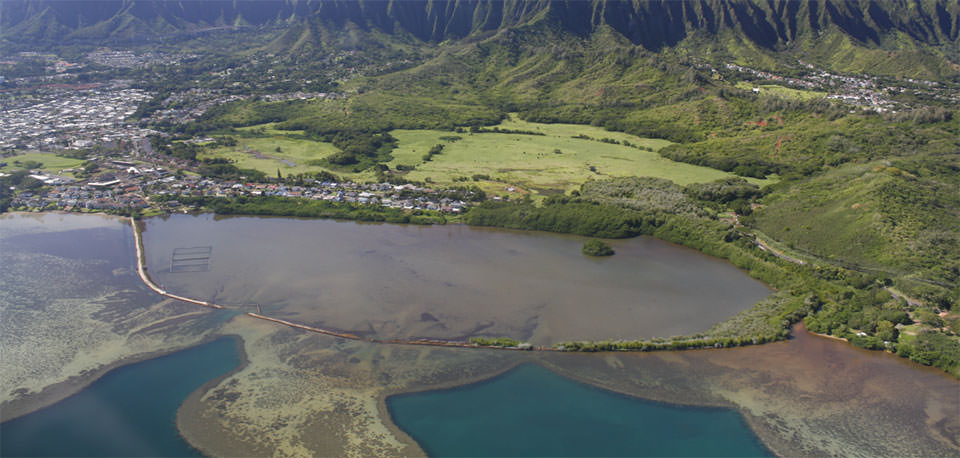NOAA designates 29th National Estuarine Research Reserve
New reserve to be managed in partnership with state of Hawaii.

New NERR!
He'eia National Estuarine Research Reserve—the 29th NERR in the national system and first new reserve in more than six years—includes unique and diverse upland, estuarine, and marine habitats within the He'eia estuary and a portion of Kaneohe Bay, protecting a stream, coral reefs, sand flats, and important cultural components. The cultural sites include traditional agricultural and heritage lands.
On Jan. 19 , NOAA announced the establishment of the He'eia National Estuarine Research Reserve. Estuarine reserves protect a section of an estuary and provide a living laboratory to explore and understand the important areas where rivers meet the sea.
The 1,385-acre He'eia National Estuarine Research Reserve encompasses upland forests and grasslands, wetlands, reefs and seagrass beds, as well as the largest sheltered body of water in the Hawaiian Island chain. It is located within the Kaneohe Bay estuary on the windward side of Oahu and includes significant historic and cultural resources.
Education and community involvement are an important part of each reserve, and the system as a whole is an integral part NOAA's efforts to improve the resilience of coastal communities and economies. Estuaries themselves provide many community benefits, including flood protection, water filtration, fish and wildlife habitat, and recreation opportunities.
The new reserve will be managed in partnership with the State of Hawaii through the University of Hawaii's Hawaii Institute of Marine Biology. NOAA provides national programmatic leadership, guidance, and funding. The reserve's management plan, developed with state and local partners as part of the designation process, provides direction for research, education, stewardship, and cultural activities for the next five years. Funds are provided under the Coastal Zone Management Act and it is anticipated that the Hawai'i reserve will be eligible for fiscal year 2017 funding to begin operations.
A public ceremony to commemorate the opening of the reserve is anticipated in the spring of 2017.
Get Social
More Information
Did you know?
The National Estuarine Research Reserve System is a network of 28 estuarine areas — places where freshwater from the land mixes with saltwater from the sea — established across the nation for long-term research, education, and coastal stewardship. Learn more
